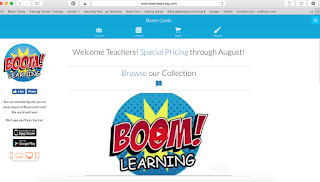Ok, so the year is off to a good start. Your bulletin boards
look great, all your cubbies are labeled, your parent letters have all been
sent. Now you have to teach them to write…..
Today kindergarten is so much more than reading, writing, and
arithmetic. We often have kids coming to us that need so much more than the
basics. With each year that goes by I find myself feeling more and more like a
social worker, a mother, a counselor and that’s just to the parents!!!!
If we want our student to be successful in school we need to
make sure they leave us being able to read and write. Let’s look at writing. How on earth do you
get kids to write when they barely write their name? This is the challenge of
kindergarten.
So let’s roll up our sleeves and figure it out.
Kindergarten writing begins with drawing pictures and
dictating. If we begin to think about
writing as thoughts on paper we begin to see drawings differently. Let the kids
draw! Let them draw about themselves. Draw about their family, their favorite
foods, what they did on the playground.
Let them be free, and you do the writing. Have them dictate what is
going on in the picture and you write it down. Every kid I know watches you
write their words with intensity. For many of our kids it will be the first time
they have “seen” their thoughts in print. It’s a powerful moment for them, and
it sets the tone. It tells the kids “You
have a voice, and that voice can be written down and read.”
Let them see themselves as authors. Each journey begins with a single step. True
for us and true for them. It’s so important for them to see themselves
differently. Kindergarten is a sacred time, when kids start to see themselves
as more competent, more able. They will learn to read and write this year and
that transition is so empowering. We
have “book talk” in my class. It’s a time the kids are able to read their
“book” to the whole class. I have an authors’ chair they sit in when they read
to the class. For some it may be just
telling about their drawing, “This is me and my mom” for others it can be way
more elaborate. “The owl uses his talons
to catch the mouse”. The point is to
have them change their mindset to believe they are writers and their writing is
important. Start the first week.
Make it a habit. Writing, like reading and tying your shoes,
takes practice. They need to do it everyday. Make sure you have a writing
center they can access daily. Add all kinds of fun markers, pens, twisty
crayons (I don’t know what it is about
twisty crayons but my kids love them) to entice even the most hesitant
student. Add paper that is typically not
used, envelopes, note pads, long thin register tape, anything that looks
interesting.
There are 3 types of writing that kindergarteners need to
accomplish opinion, informative and narrative.
Opinion is so easy and the kids are very familiar with this
type. I have never met a child who didn’t have an opinion about a topic. “My
favorite animal is”, “My favorite food is” the list goes on and on.
Informative writing
is giving more detail. Informative writing tells something about a topic. Using
non-fiction books and having the kids respond to the text is a skill they will
need throughout their years in school. If your state has adopted Common Core
you will hear text dependent writing over and over. An apple has seeds. The pumpkin is orange.
Finally there is narrative. This type of writing tells a
story. The kids describe an event and put some order into a story. We go to gym
and then we have lunch. I eat dinner
then I have a bath. The princess went
into the woods and a zombie ate her. (actual story by Jayden, my kids were
seriously into zombies last year)
Giving them the “write” tools (get it?)
the “write” tools. Seriously our job is to give the kids the tools and
strategies they need to be successful. Unit
word walls, writing prompts, sentence starters, and cooperative writing these
are all the strategies to help them on their way. We’ll be looking at each of these in detail
in the coming weeks… stay tuned.
Remember writing in kindergarten is really just storytelling,
and kindergarteners love to tell stories, so we are half way there. Don’t forget that being a kindergarten teacher
is powerful work. We begin to shape how kids see themselves. Take this super power
seriously.
Grab these writing prompts.
Check out my newest post in this series, How to make writing more than just narrative.
Grab these writing prompts.
Check out my newest post in this series, How to make writing more than just narrative.


























